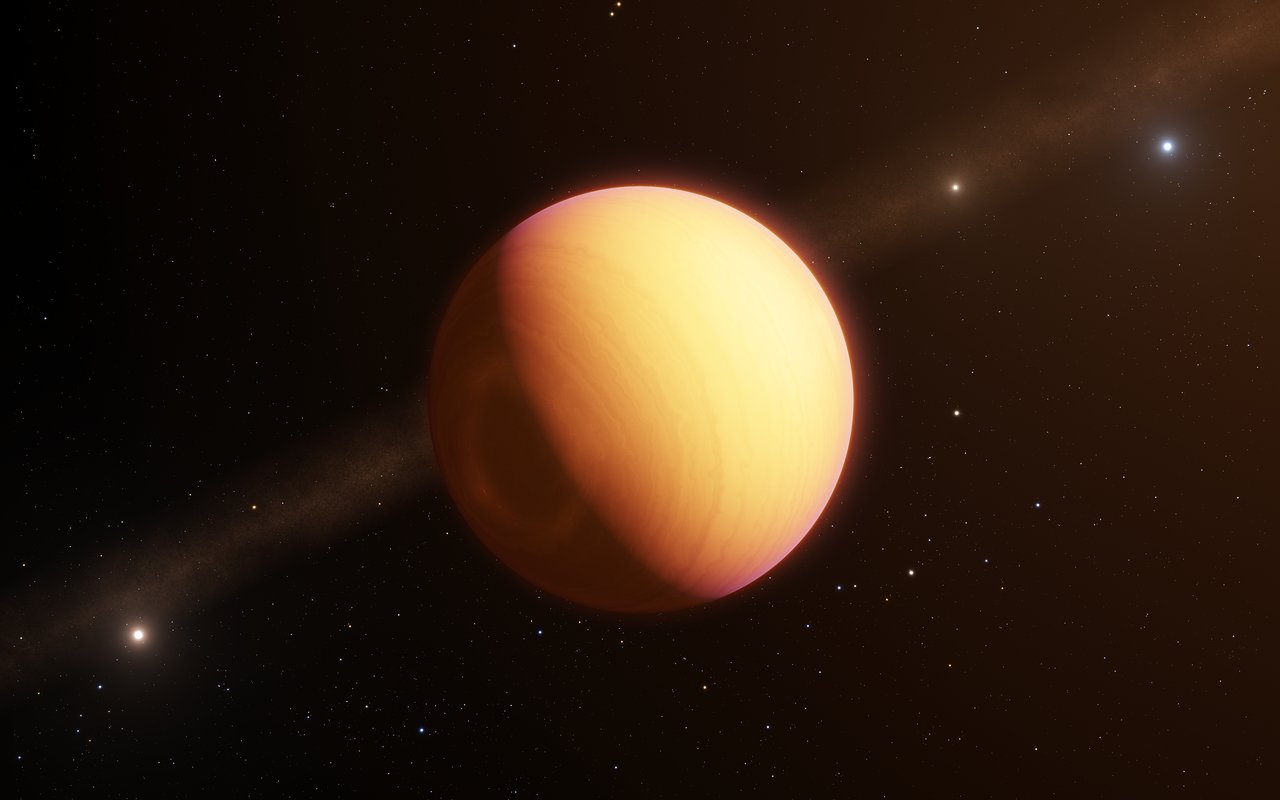The weather for HR 8799 e: 1000 degrees Celsius with clouds of iron and silicate dust
HR 8799 e is a rather inhospitable place. The celestial body discovered in 2010 and orbiting the 30-million-year-young star HR 8799 at a distance of 129 light-years from Earth is a gas giant similar to Jupiter. But its host star shines nearly five times brighter than our Sun, creating a significantly hotter atmosphere for HR 8799’s innermost planet (despite the “e,” HR 8799 e is the closest planet to its host star) than Jupiter.
That is quite astonishing because at approximately 14.5 AU, HR 8799 e is almost five times farther from its host star than Jupiter is from our Sun. However, the gas giant also has five to ten times more mass and, because it is still rather young, like its star, has probably stored up a lot of heat from its birth phase. Astronomers at the European Southern Observatory (ESO) used the GRAVITY instrument on the Very Large Telescope Interferometer (VLTI) to make the first direct observation of an exoplanet by means of interferometry using HR 8799 e as the test subject.
Their results: the planet apparently has a complex, 1000-degree Celsius hot atmosphere consisting of carbon monoxide with clouds made from iron and silicate dust circulating in a planet-wide storm. GRAVITY can virtually combine the four ESO VLT telescopes, in order to simulate a single larger telescope. This produces a super telescope, the VLTI, which can collect and precisely separate light from the atmosphere of HR 8799 e and light from its host star HR 8799.
Here, the research team also came across some surprises. “Our analysis showed that HR 8799 e has an atmosphere containing far more carbon monoxide than methane – which is not to be expected according to equilibrium chemistry,” explains the head of the research team, Sylvestre Lacour. “We can best explain this surprising result with high vertical winds within the atmosphere preventing the carbon monoxide from reacting with hydrogen to form methane.”
The measurement results also showed that the clouds must contain iron and silicate particles. These are so heavy that they would need violent storms to transport them around the entire planet. “Our observations suggest a ball of gas illuminated from the interior, with rays of warm light swirling through stormy patches of dark clouds,” says Lacour. “Convection moves the clouds of silicate and iron particles around, which break apart and rain down into the interior. This produces a picture of a dynamic atmosphere of a giant exoplanet at birth, undergoing complex physical and chemical processes.”

